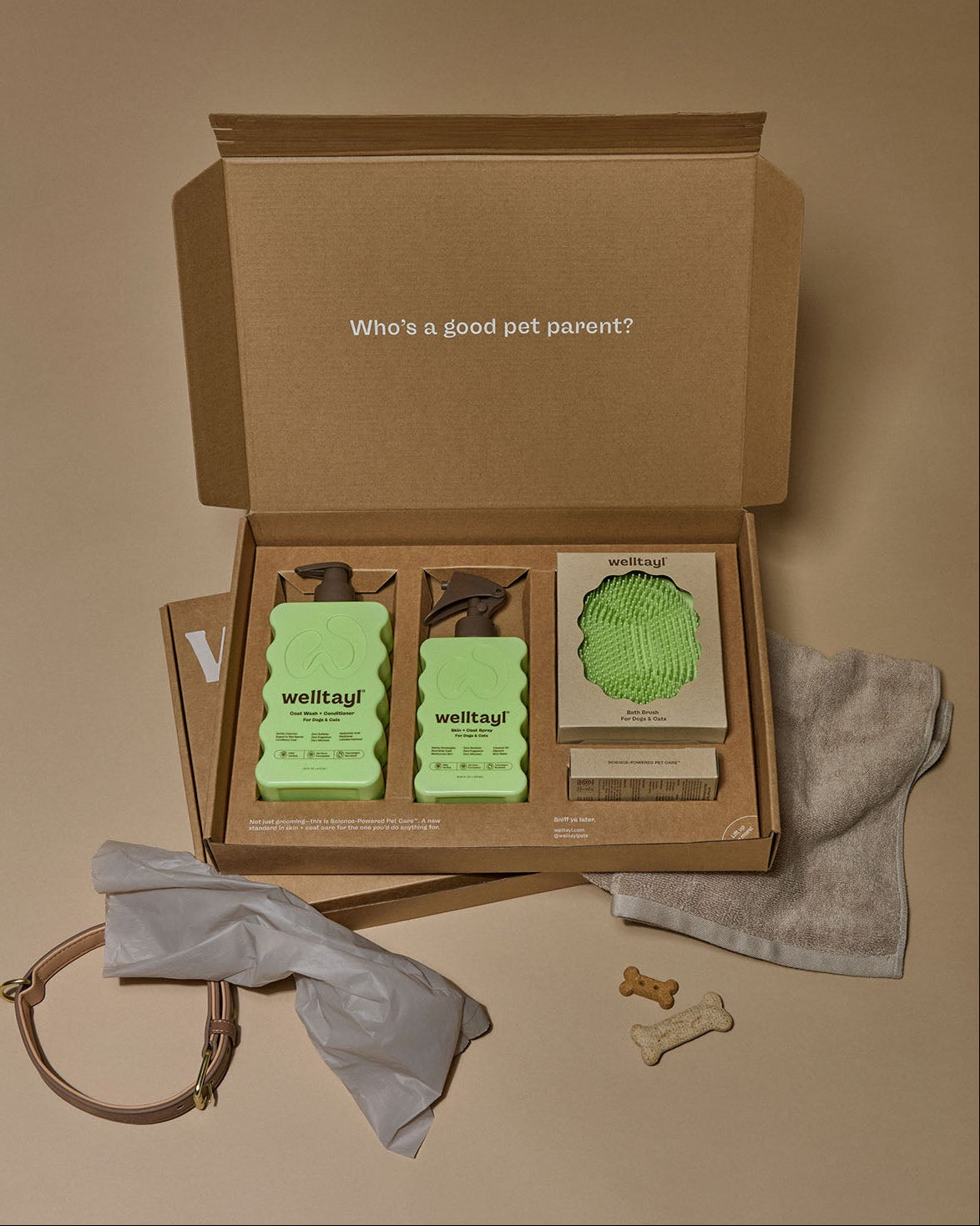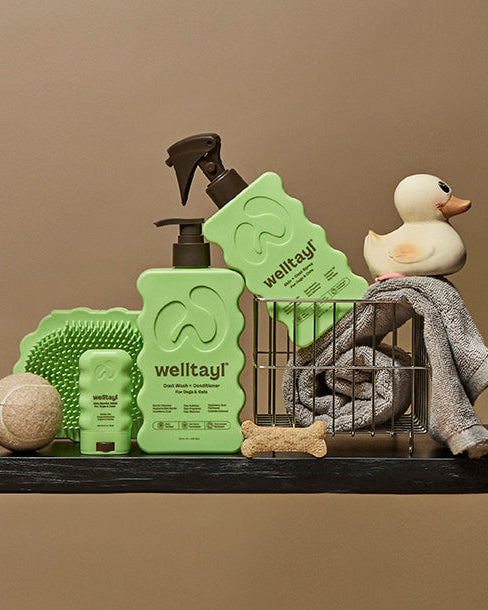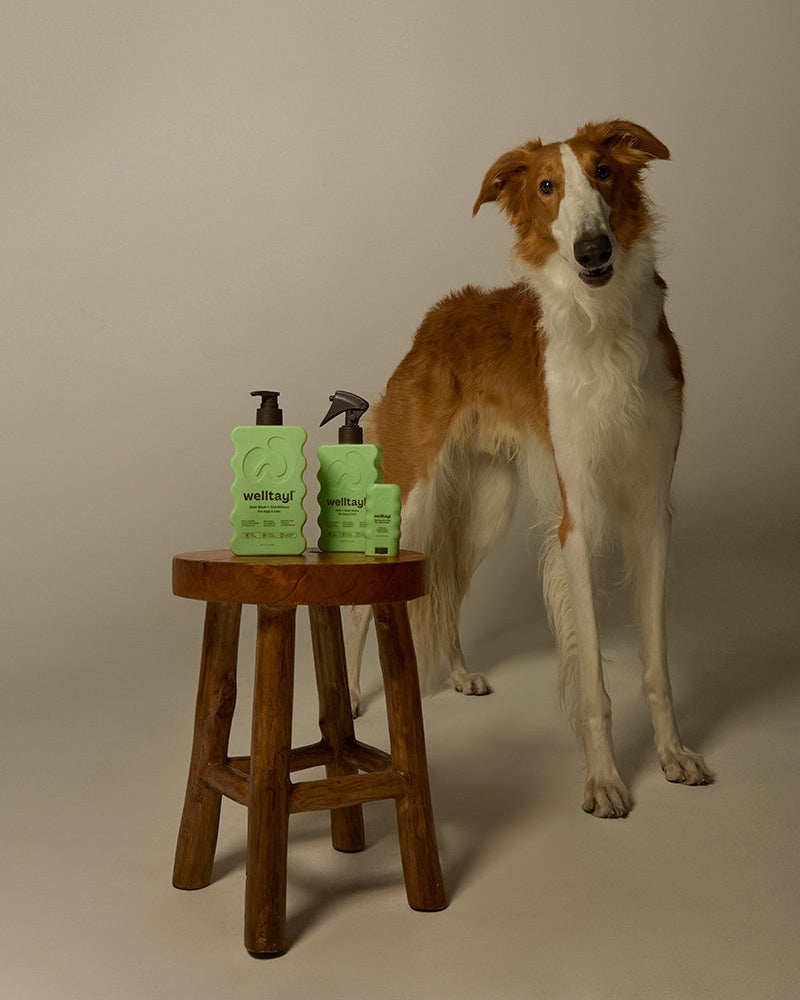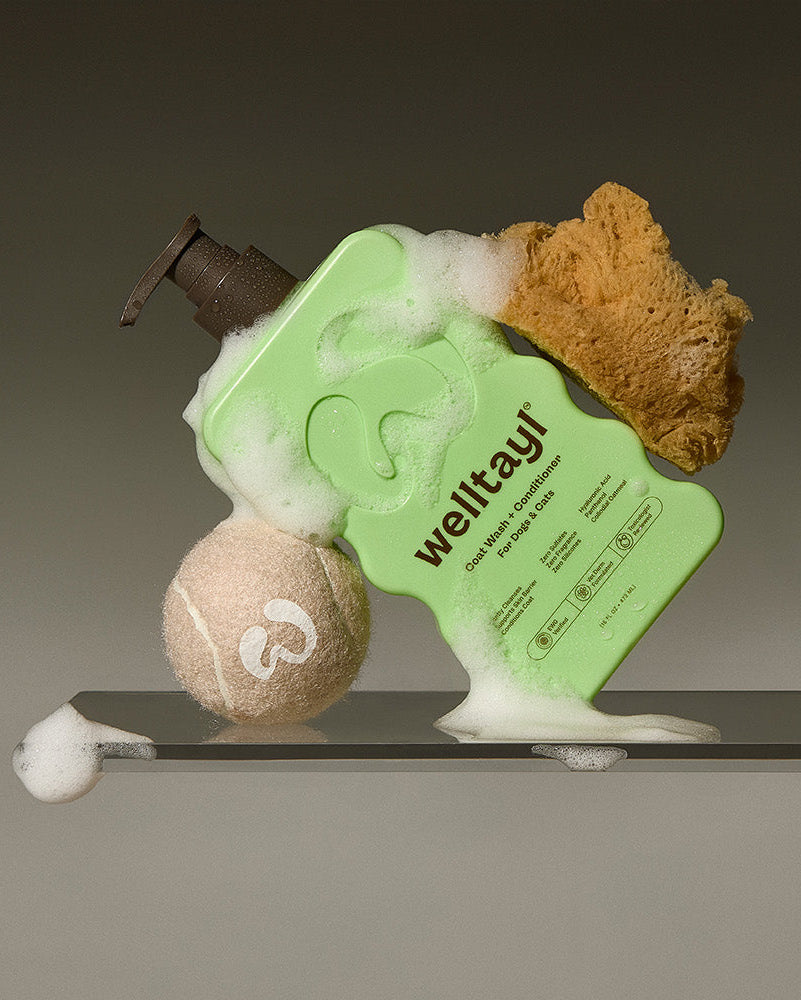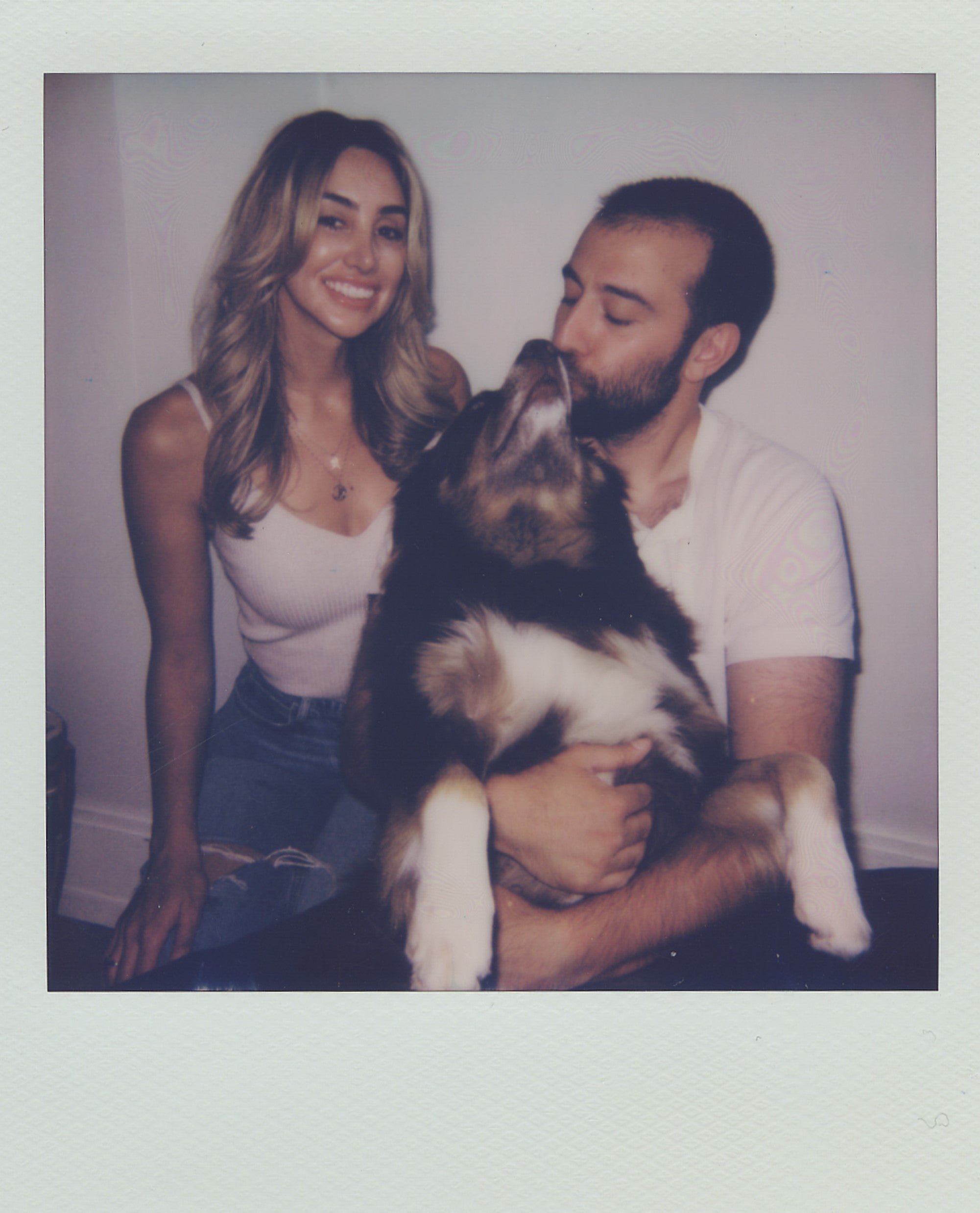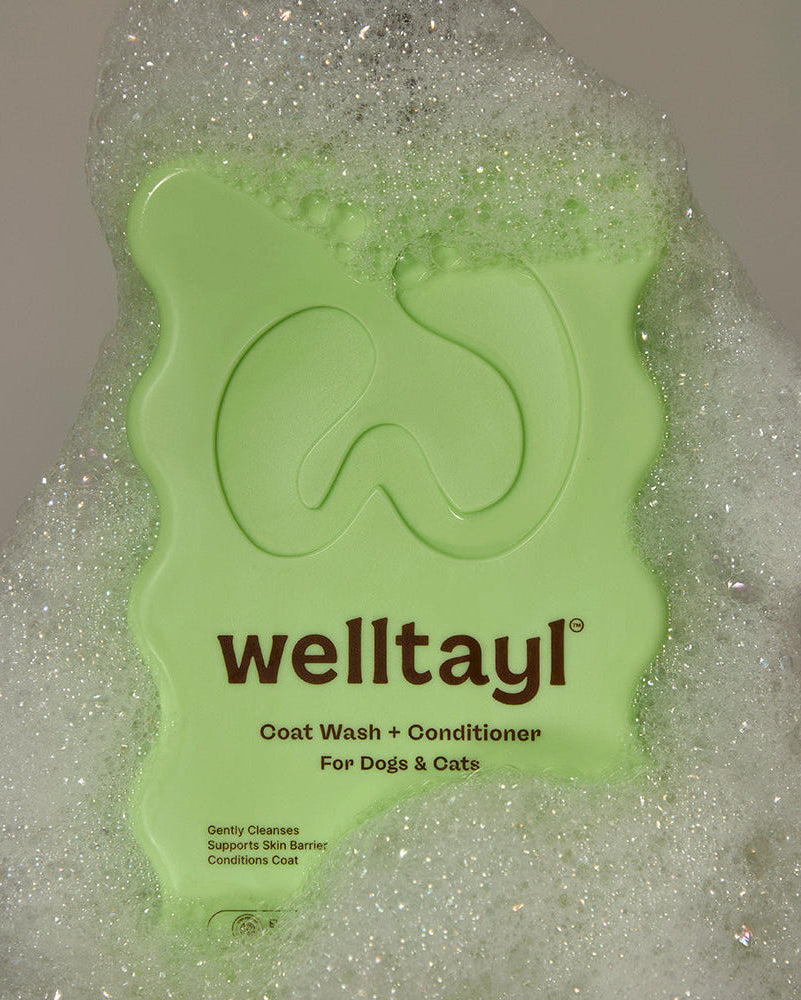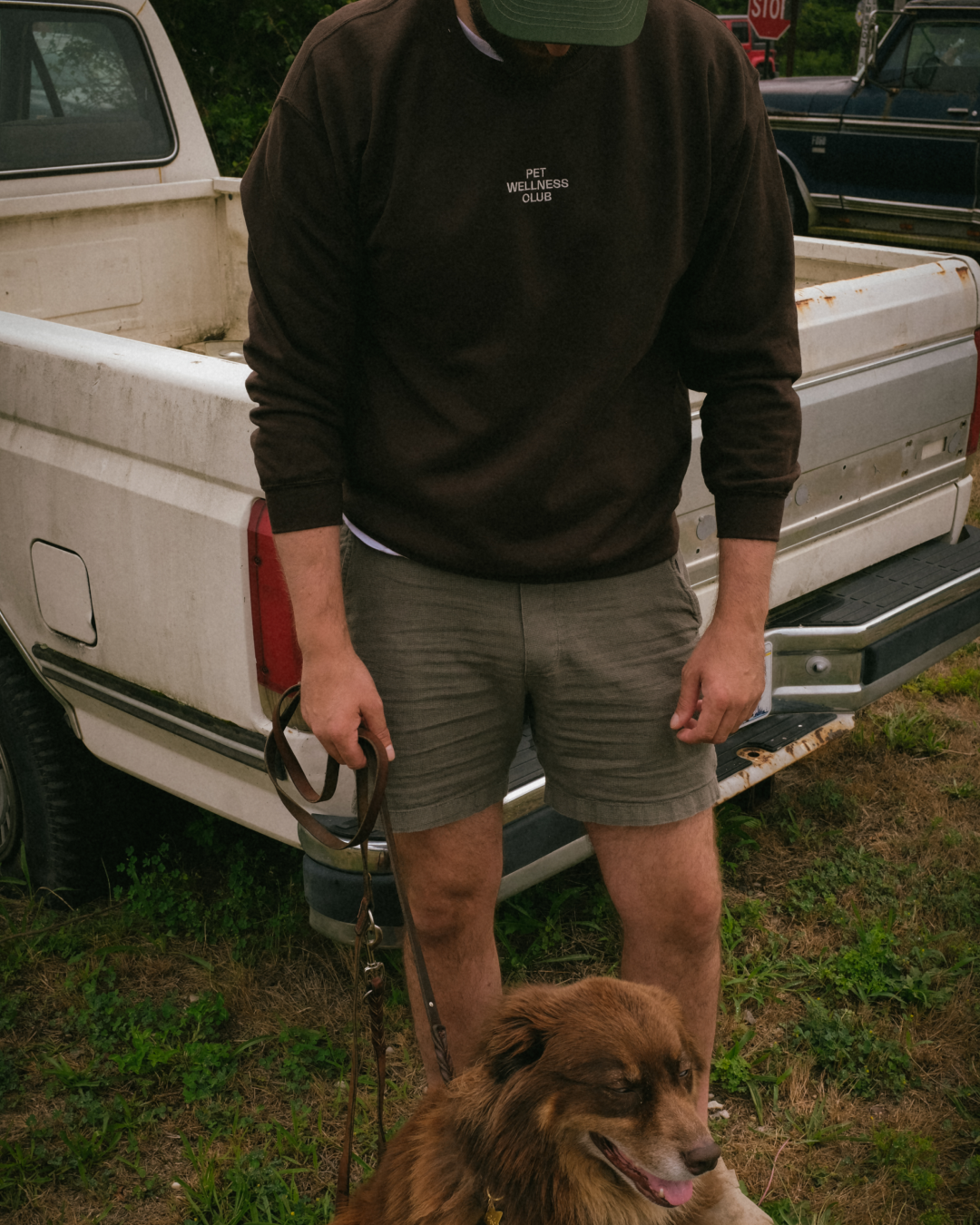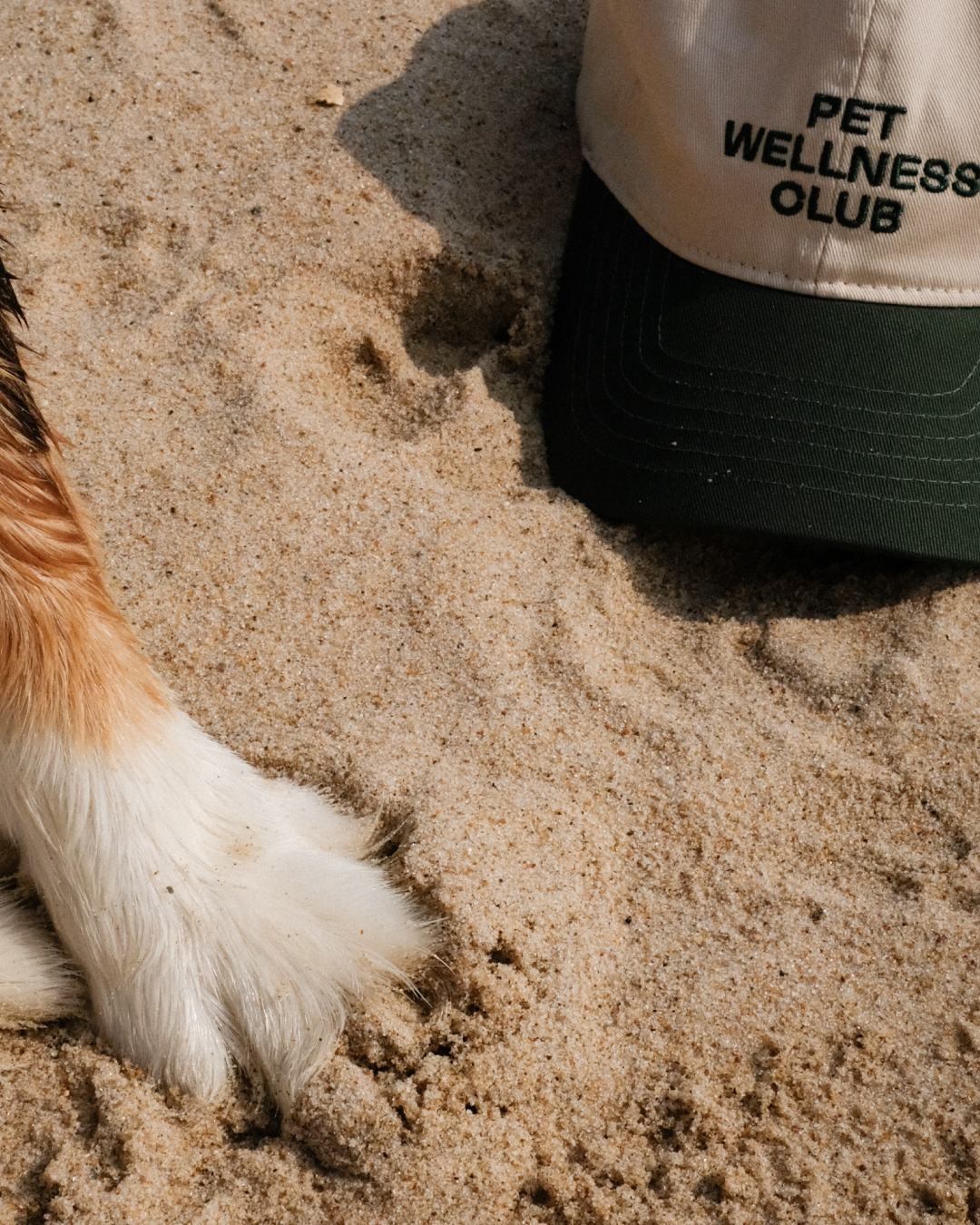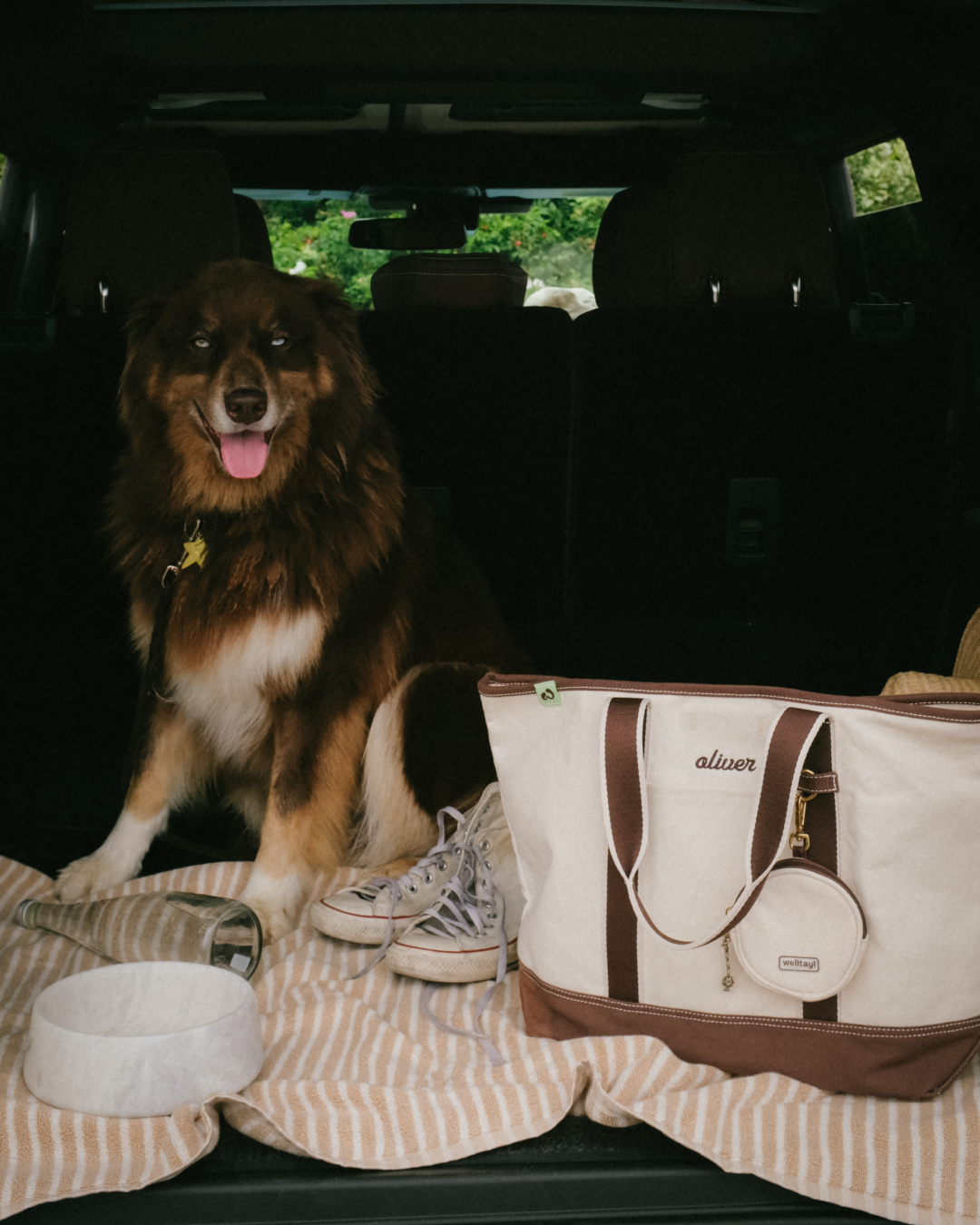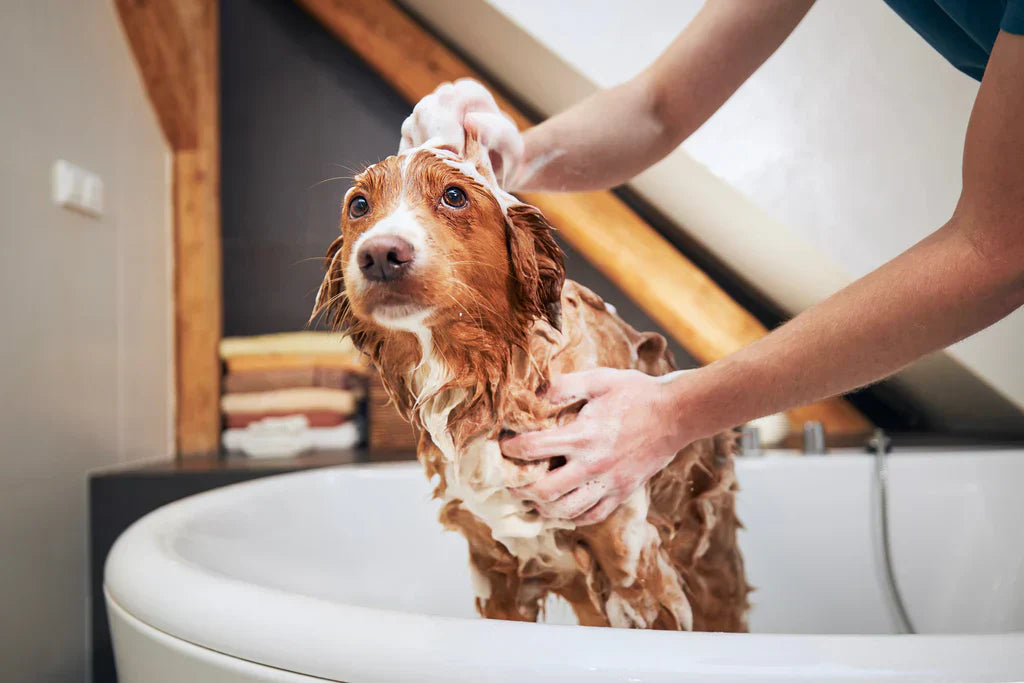Grooming your dog isn't just about keeping them looking good—it's crucial for their health and happiness too. Think of it like this: just as you feel great after a refreshing shower, your pet feels fantastic with a clean coat and trimmed nails. Whether you're brushing out tangles or giving them a full bath, regular grooming sessions are a chance to check on your dog's overall well-being, including checking for any new lumps, bumps, or pain spots before they become a more serious issue. Regular brushing or grooming is also the perfect way to strengthen the bond with your best friend.
Ideally, starting a grooming routine when your dog is young. Introducing your puppy to grooming can make it a normal, low stress, and enjoyable part of their routine. Imagine how much easier it would be if they learned to sit still for a brush as easily as they do for treats! Plus, if you're ever unsure about how to handle the fluffier challenges, remember that professional groomers are just a leash-length away, armed with the expertise to keep your pup looking and feeling their best.
Table of Contents:
- Key Takeaways
- Benefits of Regular Dog Grooming
- Essential Grooming Tools and Supplies
- Step-by-Step Grooming Process at Home
- Handling Special Grooming Situations
- Professional Grooming vs. Home Grooming
- Conclusion
- Frequently Asked Questions
Key Takeaways
- 🐶 Health and Behavioral Benefits: Regular grooming helps prevent skin infections by removing mats, maintains healthy nails to avoid discomfort and potential skeletal issues, and can improve your dog's behavior by strengthening your bond and reducing their stress.
- 🧴 Essential Tools: Choose the right tools based on your dog's coat type, such as bristle brushes for short coats and slicker brushes for dense fur, and ensure you have the necessary cleaning supplies like dog-specific shampoos and ear cleaners.
- 🛁 Step-by-Step Grooming Process: Begin with gentle brushing to detangle and remove loose hair, followed by a bath with dog-safe shampoo, drying, and nail trimming. Each step should be handled with care to avoid causing stress or discomfort.
- 🧑⚕️ Professional vs. Home Grooming: Consider the complexity of your dog's grooming needs. Professional groomers offer expertise and equipment that might be challenging to replicate at home. However, grooming at home can strengthen the bond between you and your pet and allows for regular health checks.
- ❗️ Safety Considerations: Always use products formulated for dogs to avoid skin irritation, and be cautious with grooming tools to prevent injuries. Regularly touching and looking over your dog’s body during grooming sessions can help catch health issues early.
Benefits of Regular Dog Grooming
Health Improvements
Regular grooming plays a crucial role in keeping your dog healthy. Brushing removes dead hair and skin, ensuring your dog's coat remains free from mats and tangles. Mats can cause pain and potentially lead to skin infections by trapping dirt, bacteria or added moisture on your dog’s skin. Matted fur can also be painful to your pet. Additionally, regular nail trims prevent overgrown nails, which can lead to difficulty walking, or ingrown nails that are painful and put your dog at risk for infection. Overgrown nails cause dogs to walk improperly, which in turn strains their joints and can lead to discomfort or even arthritis over time.
Behavioral Benefits
Behaviorally, regular grooming can lead to a happier and more well-behaved dog. The process of grooming increases the trust and bond between you and your dog, which can help improve their social comfort and manageability. Well-groomed dogs often receive more positive attention, reinforcing good behavior. Furthermore, the sensory experience of being brushed or combed can be calming for many dogs, helping to reduce stress and anxiety levels.
For more insightful tips and trending care methods for your beloved pet, join the Welltayl newsletter. Here, you'll dive deeper into perfecting your pet care game with expert guidance right in your inbox!
Essential Grooming Tools and Supplies
Choosing the Right Brushes and Combs
Selecting the appropriate brushes and combs for your dog is essential, depending on their fur type. For dogs with short, smooth coats, like beagles and boxers, a bristle brush works perfectly to remove loose fur and stimulate the skin. Breeds with thick, double coats like huskies and Bernese mountain dogs will benefit from a slicker brush to tackle mats and tangles effectively.
For breeds prone to tangles and mats, including poodles and some spaniel breeds, a steel comb is ideal.This tool helps in detangling fur around sensitive areas like ears and paws, where knots frequently occur. Regular combing keeps your dog's coat smooth and helps to reduces the amount of fur they shed around the house.
Must-Have Cleaning Supplies
Grooming your dog is not just about brushing; you'll also need proper cleaning supplies to maintain their hygiene. Dog-specific shampoos and conditioners like Welltayl's Coat Wash + Conditioner are formulated to support and maintain the pH level of your dog’s skin, and can help alleviate conditions like dry or oily skin. For dogs that are prone to getting dirty or have an active lifestyle, having an adequate supply of these will make bath time more efficient and effective. Never use human shampoos on your dog unless advised by your veterinarian, because many contain ingredients that are harmful to dogs, and they can disrupt your dog’s skin microbiome and natural oils required to keep their skin and coat healthy.

Step-by-Step Grooming Process at Home
Beginners guide to grooming your dog at home
Grooming your dog at home can be a rewarding experience. Follow these basic steps for starting a grooming routine for your dog:
- Gather Supplies: Brush, comb, dog shampoo, towels, nail clippers,, and treats.
- Brushing: Start by gently brushing your dog to remove loose hair and detangle any mats. Use a brush suitable for your dog’s coat type.
- Bathing: Use lukewarm water and a dog-specific shampoo. Rinse thoroughly to avoid skin irritation.
- Drying: Towel dry your dog or use a blow-dryer on a low, cool setting. Never place the blow dryer directly on your dog’s skin, or leave it one area for too long.
- Nail Trimming: Use dog nail clippers and trim a little bit at a time to avoid cutting the quick.
- Reward: Give your dog a treat and ample praise to make the experience positive.
Bathing Techniques
Patience and planning are key when it comes to bathing your dog. Start by ensuring you have the right shampoo for your dog’s fur type, because using dog-specific products helps protect their coat and skin. When in doubt, consult your veterinarian for dog-safe shampoo options.Wet your dog’s coat thoroughly with lukewarm water before applying the shampoo. Massage the shampoo into the coat from head to tail, being careful to avoid the eyes and ears. After lathering, rinse completely to prevent irritation or buildup. A dog-specific conditioner can follow if your dog has a long or tangled coat. After rinsing, gently pat dry with a towel. If your dog tolerates it, a blow-dryer on a low, cool setting can help to fully dry the coat and prevent moisture-related skin issues.
Brushing Fundamentals
Regular brushing keeps your dog’s fur smooth and clean, which can help reduce shedding by removing excess hair. Choose a brush type that matches your dog’s hair length and texture. For short-haired breeds, a rubber brush or bristle brush works well, while long-haired breeds benefit from wire pin brushes or slicker brushes to remove tangles. Begin brushing from the head, moving down towards the tail and legs, following the direction of hair growth. This method removes dead hair and skin cells, and helps distribute natural oils throughout the coat, producing a healthy shine.
Nail Trimming
Nail trimming is crucial for maintaining your dog's paw health. Long nails can cause discomfort or even lead to skeletal damage. Use a specially designed canine nail clipper and identify the quick inside the nail—this is the blood supply you need to avoid cutting. Trim the nail a few millimeters away from the quick to prevent bleeding. If you do accidentally cut the quick, apply styptic powder to stop the bleeding. If trimming your dog’s nails seems daunting, consider visiting a professional groomer or your veterinarian.
Ear and Eye Care
Keep your dog’s ears clean and dry to prevent ear infections, especially in breeds with floppy ears. Consult your veterinarian for recommendations on how often to clean your dog’s ears and the best ear cleaning solution for your pet. For eye care, regularly check for redness or discharge. Clean any accumulation gently with a soft, damp cloth, and seek veterinary care if you notice any green,yellow, or abnormal eye discharge or redness in or around the eyes.
Handling Special Grooming Situations
While maintaining your dog's grooming routine, some situations require a more tailored approach. Follow these key strategies for grooming dogs with special needs, including dogs with anxiety or old age,to ensure that your beloved pet remains comfortable and healthy throughout the process.
Grooming Anxious Dogs
Grooming an anxious dog presents unique challenges that require patience and careful handling to prevent added stress. First, create a calm grooming environment—keep noise levels low and limit the presence of strangers or other pets. It helps to use familiar grooming tools, as unfamiliar sounds or sensations may exacerbate the dog's anxiety.
Begin grooming sessions with short, positive sessions. For example, brush your dog for a few minutes, and immediately follow up with playtime or their favorite treat. Providing positive reinforcement can help make grooming sessions something your dog looks forward to rather than fear. Additionally, consider using calming products like anxiety wraps during grooming to help them relax more.
For dogs that are extremely resistant to grooming, consult your veterinarian for possible medications, supplements, and training tools, to help ease their anxiety.
Managing Senior Dogs
Senior dogs may suffer physical challenges that can make the grooming process more challenging, including arthritis or skin sensitivity. Ensure to prioritize their comfort and safety with tools including grooming tables with non-slip surfaces or provide soft padding to cushion their joints. When caring for your senior pup’s coat, ensure to use soft tools because their skin can become thinner and more prone to irritation. Use a soft-bristled brush and avoid pulling hard on tangles—if mats are severe, consider a professional groomer, or consult your veterinarian who can address the issues without causing discomfort. Regularly check their paws, ears, and teeth for any signs of infection or discomfort, older dogs may also benefit from luke-warm baths, which can help soothe sore muscles and joints. Make sure to dry them thoroughly, especially during colder seasons, to prevent chill and discomfort. If grooming becomes too challenging as your dog ages, consider hiring a professional groomer specialized in handling senior pets. They can offer personalized advice and techniques tailored to your dog's needs, ensuring a smooth and comfortable grooming experience.

Professional Grooming vs. Home Grooming
When deciding between professional grooming and home grooming for your dog, it's essential to consider the benefits and challenges of each option. Each choice impacts your dog's health, appearance, and emotional well-being.
|
Aspect |
Home Grooming |
Professional Grooming |
|
Cost |
Low (Mostly initial investment in tools) |
High (Per session cost) |
|
Convenience |
Medium (Requires scheduling and setup) |
High (Drop-off and pick-up) |
|
Expertise |
Low (Requires learning and practice) |
High (Trained professionals) |
|
Quality of Grooming |
Medium (Depends on skill level) |
High (Expert care and equipment) |
|
Time Commitment |
High (Regular sessions needed) |
Low (Professionals handle tasks efficiently) |
For hands-on owners, home grooming can be a fulfilling activity. However, if you seek high-quality grooming with minimal effort, consider professional groomers.
Professional Grooming Advantages
Choosing professional grooming will allow your dog to benefit from the expertise of trained professionals who regularly handle complex tasks like safely cutting nails, and addressing severe matting without harming the skin. Groomers use specialized tools and products tailored for your dog’s specific fur type and skin needs, which might not be readily available at home. Additionally, professional groomers inspect your dog's skin and coat during grooming sessions, potentially noting early signs of issues like parasites or skin infections to be addressed by your veterinarian. When choosing a professional dog groomer, research their credentials, track record, and certifications to ensure they are qualified and experienced. Additionally, consult your vet for recommendations, especially if your dog has special needs, to find a groomer who can provide the appropriate care.
Home Grooming Benefits
Grooming your dog at home is the perfect opportunity to bond with your pet. It allows you to establish a routine that makes your dog feel safe and comfortable. Home grooming can include tasks like using a curry brush for dogs that excessively shed, or a slicker brush to carefully remove tangles and mats in medium-to-long-haired dogs. Home grooming also enables you to regularly check your dog’s health by examining their coat, skin, ears, and nails, which is essential for early detection of any potential health problems.
Making the Best Choice
If you have the time and are willing to learn the proper grooming tips and techniques, home grooming can be a rewarding experience that strengthens your relationship with your dog. However, for more complicated grooming needs or if you're uncomfortable with certain grooming tasks, professional grooming is a reliable alternative that ensures your dog’s grooming needs are met with a high standard of care and professionalism.
Join the Welltayl newsletter to get all the latest grooming tips, right in your inbox! Become a part of our pet-friendly community! Sniff out exclusive emails, exciting announcements, and more.
Conclusion
Grooming your dog is not just about keeping them looking good—it's a fundamental aspect of their health and happiness. Whether you choose to groom your dog at home or opt for a professional's touch, what matters most is that you're attentive to their needs and comfort. Remember, regular grooming sessions are more than just a beauty routine; they're a chance to bond with your pet and spot any potential health issues. So get that tub going or schedule an appointment—your pet deserves the best care possible.
Frequently asked questions:
How often should you groom your dog?
The frequency of grooming your dog depends on several factors including breed, coat type, and activity level. Generally:
- Short-haired dogs: Brush once a week.
- Long-haired dogs: Brush daily or every other day to prevent mats and tangles.
- Dogs with double coats: Brush a few times a week, especially during shedding season.
- Bathing: Typically every 4-6 weeks, but this can vary depending on the dog’s lifestyle and coat type.
- Nail trimming: Every 3-4 weeks.
- Ear cleaning: Check weekly and clean as needed or advised by your veterinarian
What should be avoided when grooming a dog?
When grooming your dog, avoid the following mistakes:
- Using human products: Only use products specifically designed for dogs to prevent skin irritation or illness.
- Cutting mats without proper tools: Use a mat splitter or detangler to safely remove mats.
- Bathing too frequently: Over-bathing can strip natural oils from your dog’s coat, leading to dry skin.
- Cutting nails too short: Be cautious to avoid cutting the quick, which can cause bleeding and pain.
- Ignoring signs of stress: If your dog is stressed or uncomfortable, take breaks to avoid negative associations with grooming.
How do groomers keep dogs still while grooming?
Professional groomers use several techniques to keep dogs calm and still during grooming:
- Comfortable Environment: A calm, quiet atmosphere with minimal distractions.
- Restraints: Tools including grooming loops and harnesses are used to keep the dogs safely in place
- Gentle Handling: Gentle, confident handling is paramount to help reduce a dog’s anxiety.
- Positive Reinforcement: Offering treats, praise, and breaks helps to keep the dog relaxed during grooming
- Desensitization: This is accomplished by gradually introducing grooming tools and allowing the dog to sniff them and slowly acclimate, while providing positive praise or treats.during grooming sessions.
- Professional Training: Groomers are trained to read dog body language and respond appropriately to keep the dog calm.
Resources:
Read more
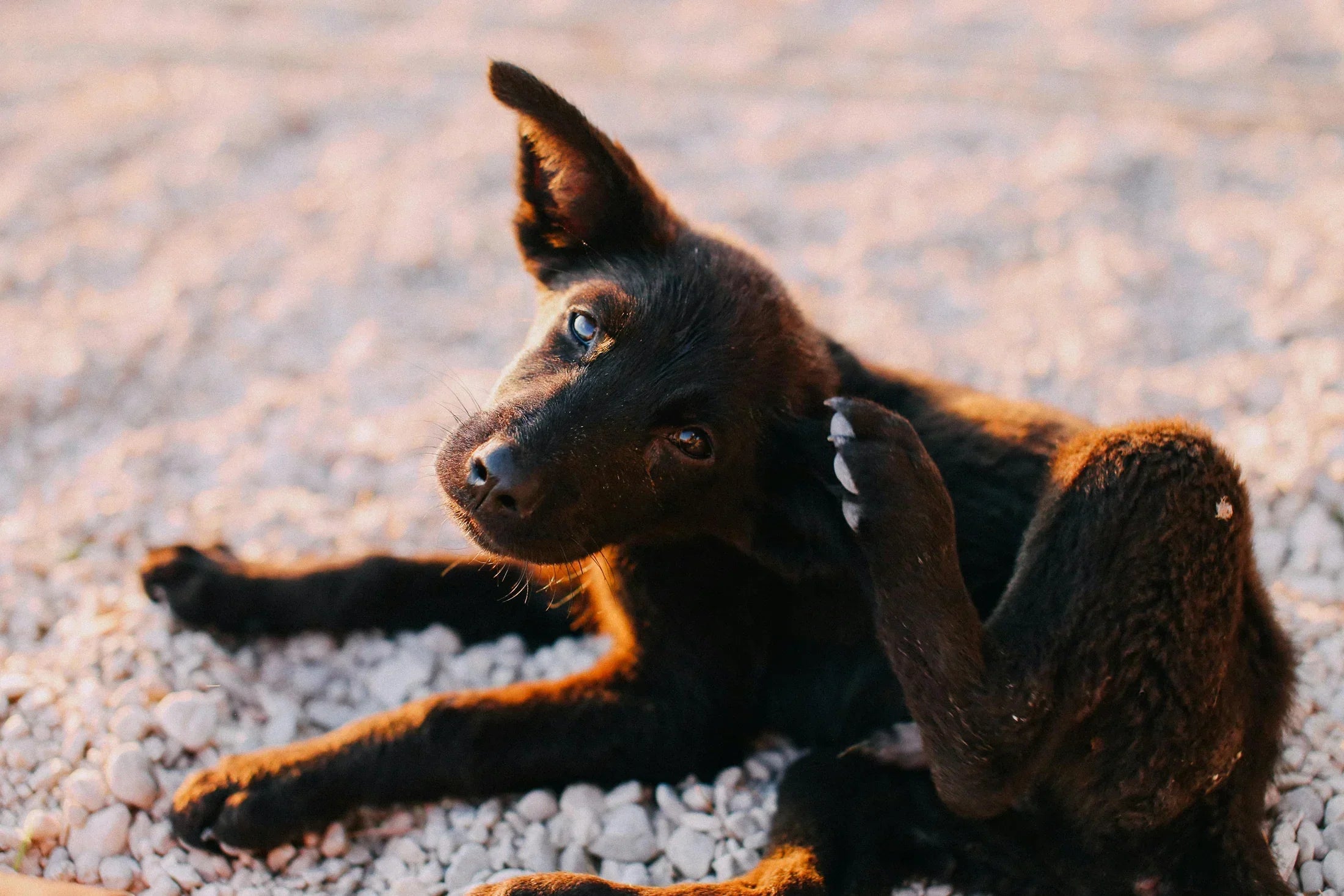
Understand the causes, symptoms, and effective treatments for dry skin on dogs. Become a better pet owner by knowing how to help your pet!

Discover the 4 vet-approved dog grooming tips to keep your pet healthy and happy all year round. Learn proper techniques and more. Start grooming today!

